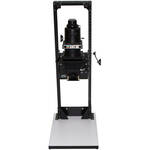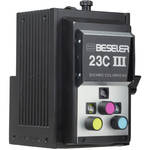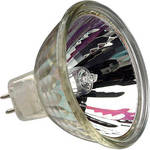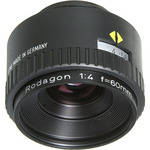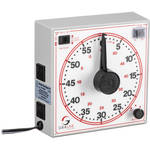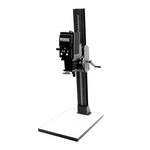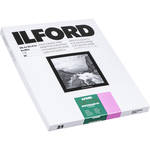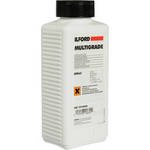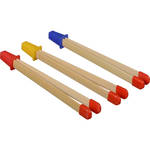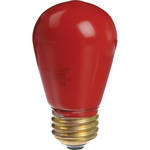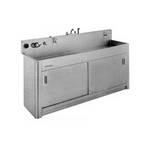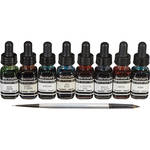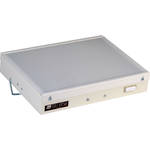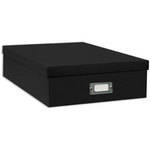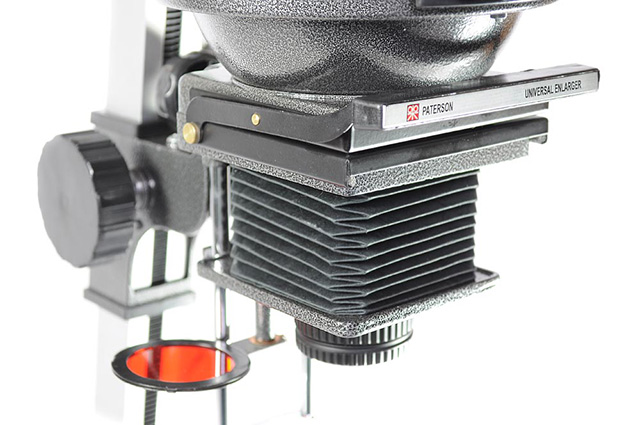تخطيط الغرفة التجارية المظلمةPLANNING THE COMMERCIAL DARKROOMIn planning the preliminary layout of a commercial darkroom the following factors should be considered :1. The quality of work to be done .
2. The number of people who will be using the darkroom .
3. The equipment to be installed
4. The space available .
5. The direction of the flow of work through the darkroom .
When you estimate the amount of work to be done in the darkroom , be sure to make allowances for peak periods and do not consider only the average volume of work . In some businesses , the amount of work during peak periods is several times as great as the average load , and this must be taken into account . You must also give some thought to the possibility of changes in the nature of the work . You may , for example , have a portrait studio and use your darkroom primarily for the processing of black and white portraits , sending out your color work to a processing laboratory .
Consider the possibility that you may have enough volume to make it feasible to do your own color processing and give some thought to the possibility of expanding your darkroom facilities accordingly . If you do not provide for the possibility of expansion and you subsequently find it necessary to expand , your darkroom may become so cluttered up and inefficient that work will proceed only at considerable inconvenience and in an exceedingly inefficient manner . Judgment on this point is quite important . If you are starting up in business , it is only natural to be optimistic and to make due provisions for work expansion , but do not be too optimistic . You can easily go to the other extreme and end up with so high an overhead in rent as to impose a very serious burden .
If space permits , it is a good idea to have two separate darkrooms , one for negative material and the other for positive material . This is particularly important if there are two or more people likely to be using the darkroom . In a larger business , a special small darkroom just big enough to permit the loading and unloading of film holders is often desirable – otherwise the loading of holders may prove extremely inconvenient when the darkroom is in use and a rush order comes in demanding immediate attention and you do not have time to wait for the necessary loading up of film holders .
Even aside from this consideration , it is never a good idea to have two people working in a darkroom in complete darkness , one processing film , the other loading holders . There is a likelihood that they will bump into each other and cause considerable disruption of work to the detriment of efficiency .
Efficient useability is the essential requirement of any good darkroom layout . It follows , therefore , that the equipment and materials should be arranged so as to allow work to be done in the most convenient and efficient manner with the least possible lost motion . All operations should progress smoothly from the first step to the last in as direct a line as possible . Further , the darkroom itself being only part of the facilities of the photographer , must be planned to dovetail into all other operations of the establishment . The shorter and smoother you . make the flow of work through the darkroom and other processing rooms from the loading of film holders to the final wrapping up of the finished print , the more efficient is the operation , and the greater the volume of work that can be turned out for an equal cost in time and money .
If you stop and think for a moment , you will readily see that the most . important factor in a good darkroom design is providing for an efficient flow of work with the least cost in time and effort . Unfortunately , this point is often overlooked and equipment is located where it seems to fit best physically without regard to how well this location affects the overall efficiency of the darkroom .
A complete darkroom should be separated into ” dry ” and ” wet ” areas . The dry areas take in the space where film is loaded and unloaded , where the enlargers and printers are located , and where sensitized materials are stored and handled . The wet areas take in all areas where solutions are handled and processing is done . By separating these areas physically , you guard against the possibility of contaminating the dry work area by the splashing of liquids containing corrosive or active chemicals onto surfaces which may come in contact with sensitized film or paper . Cleanliness in the handling of sensitized material is of the utmost importance . It not only results in better work , but it saves a considerable amount of time and money . Film ruined by sloppy handling not only results in a waste of money , but it can result in a ruined exposure . A negative or sheet of printing paper with chemical dust on it means additional loss of time in spotting the finished print .
As a general rule , it is better to have the wet and dry areas on opposite sides of the darkroom , with an aisle between . The aisle width should be at least three feet for one operator , and four feet if two people are working together .
Processing trays and tanks can be arranged along a wall , in a corner or down the middle of a room . The latter arrangement is seldom used except in rather large darkrooms where considerable volume of work is done . Usually the best . arrangement is to have a straight line of trays or tanks along the wall . For very large darkrooms where a number of people may be working at the same time , a double row of sinks placed back to back may be arranged in an aisle down the center of the room . This reduces the necessary plumbing , since the same water and drain lines can be used for both sinks . However , before deciding on this arrangement , be sure that it fits in well with the efficient layout of the darkroom in all other respects . Trying to save a little money on the plumbing bill is a good idea , but only if it does not , at the same time , disrupt the orderly flow of work through the darkroom .
The entrance to a darkroom should usually be placed at the beginning or end ( or both ) of an aisle . If an entrance is placed in the middle of a side wall , it wastes useful wall space and cuts down the length of valuable work bench or sink space . As a general rule , in a commercial darkroom the bench and the sink are of about equal length . This is a general rule , of course . The student or advanced amateur may do his developing of film and paper at one end of the bench and , in that case , his sink would be small . This is a very common arrangement because the larger sinks used by commercial photographers are quite expensive . On the other hand , the very large photographic establishments frequently specialize to a considerable degree , and in that case their requirements are far from average so that they do not follow any established rule .
If the layout of your particular darkroom does not provide equal length for the bench and the processing sink , you might bear the following in mind if it is necessary to shorten one or the other . In a film darkroom , the processing sink can be longer than the bench , since the bench is generally restricted to the loading and unloading of film which can , if necessary , be done in fairly limited quarters Processing tanks and trays take up a considerable amount of space and this space cannot be reduced without serious loss of efficiency and convenience . In printing room , the dry area bench is generally longer than the processing sink because this space must provide for printers , enlargers , and print handling space .
The smooth progress of work in a darkroom can be aided if all work that does not require the use of safelights is done outside the darkroom . For example , prints can be exposed , developed and fixed in the darkroom ; then passed out of the darkroom through a light – tight pass box to a general workroom for washing , drying , trimming , mounting and spotting . This is a very common practice in a medium to large operation . In a somewhat smaller operation , the washing may also be done in the darkroom if the volume of work is such that simple tray washers are adequate and the processing sink is long enough for the purpose .
The size of a darkroom obviously depends on the use to which it is to be put . The minimum size for professional or commercial work is about 6 ft . by 8 ft . This , of course , is for a one man operation . The advanced amateur or student photographer can get along with a somewhat smaller space if absolutely necessary , but a 6 ft . by 8 ft . darkroom is recommended even for him as a safe minimum .
The darkroom must be large enough to accomodate conveniently tanks and trays for the largest size of films and paper that will be used in it . Reducing darkroom space below this minimum not only interferes with the photographer’s work , but presents an important ventilation problem . Such small darkrooms are likely to become exceedingly hot and stuffy in warm weather . On the other hand , an excessively large darkroom wastes time and effort . Both extremes can be avoided by proper planning in advance .
Start your preliminary planning by studying existing plans and layouts of successful commercial darkrooms , making such necessary changes and modifications as may be necessary for your particular requirements . If you are already in business commercially , you undoubtedly have some ideas on this subject and have some first – hand knowledge of other darkrooms which you can use as guides . You also have tacts with the representatives of the various equipment and material manufacturers , and such people can provide invaluable assistance . In addition , and this applies also to the student beginner or the inexperienced photographer who is establishing himself for the first time , the Eastman Kodak Company is a very useful source of information in such matters as layouts for typical darkrooms covering a wide range of uses .
A good method for determining the layout of a darkroom is to make a diagram or sketch of the proposed darkroom and then make small paper cutouts , to scale , of the principal items of major equipment you expect to put into it . Now arrange these paper cutouts in the darkroom . ( See Figure 28. ) Move the equipment about as needed while you study the effect on the flow of work . This method of planning a darkroom can be exceedingly helpful for the larger darkroom which houses quite a bit of equipment . You may find that your first thoughts require considerable modification when it comes down to the actual placement of the equipment , and it is much better to do the mind changing on paper than in the darkroom itself . Once the electrical wiring and plumbing is done , a change may be impossible .
Figure 28 The use of scale templates is an excellent way to plan an efficient arrangement of equipment in the contemplated workrooms . They can be rearranged with little effort until the best arrangement has been found .
If your preliminary planning shows you have more . space than you really need , the extra space can be used for larger storage space , additional equipment and provisions for possible subsequent expansion . On the other hand , should the cutout arrangement show that you need more space than you have available , you may be able to solve the problem by such means as reducing the length of a dry bench , consolidating two storage areas into one , reducing the distance between two work stations , or replacing some old inefficient equipment with newer more compact equipment . However , you must always keep in mind the fact that efficiency in operating a darkroom is far more important than a small saving in space .


